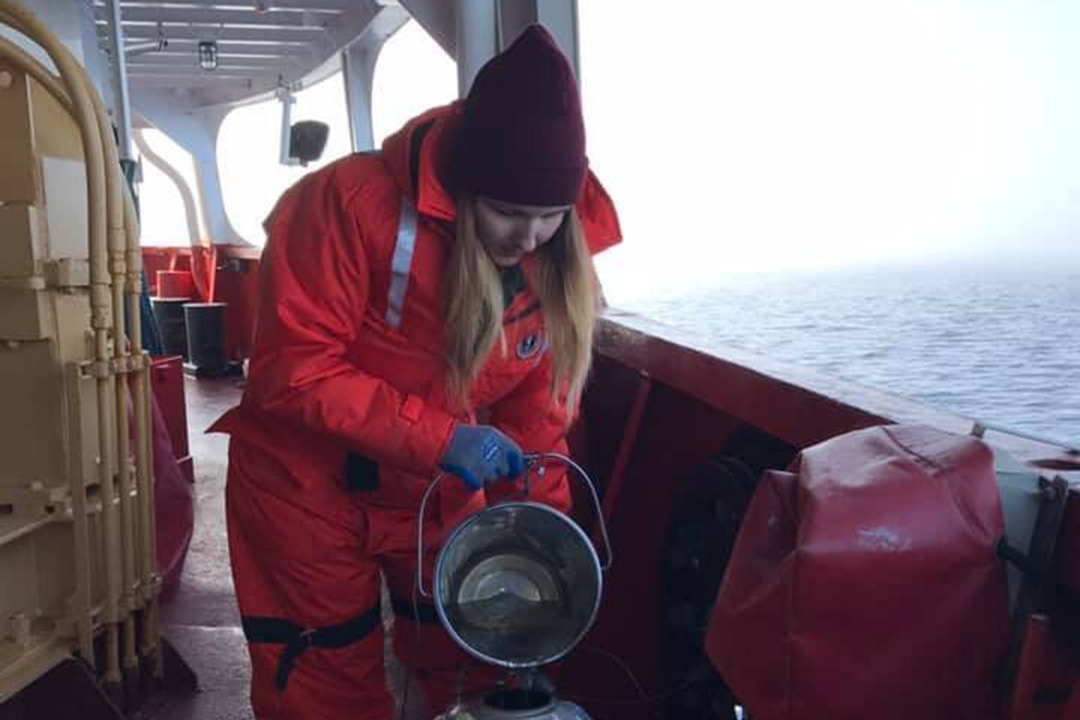If you want to buy new clothing, there’s a good chance you’re doing so from ‘fast fashion’ brands — trendy, cost-cutting labels like H&M and Zara that excel at producing a huge variety of styles to parade in front of consumers.
The rapid growth of ‘fast fashion’ over the last two decades has had serious environmental impacts, accounting for one tenth of the world’s climate emissions according to the United Nations’ Intergovernmental Panel on Climate Change.
One impact that is beginning to receive attention since the discovery of microplastics is microfibre pollution, according to Samantha Athey, a PhD candidate at the Department of Earth Sciences who studies how microfibres — microscopic fibres that come off clothing — enter different environments and ecosystems. Her research on the presence of denim microfibres in the Arctic was previously reported by The Varsity last year.
Athey spoke to The Varsity about what she has learned about microfibres, and how consumers can respond to a fast-paced fashion industry.
What makes microfibres problematic?
Microfibres are everywhere. According to Athey, they account for 80–100 per cent of microscopic particles found in water samples collected from almost all types of aquatic environments.
The physical composition of the cellulose in microfibres, either natural or synthetic, is modified by a suite of chemical additives during the production of textile materials. Athey said that microfibres thus become vehicles for chemical pollutants that persist much longer in the environment and “[have] more opportunities to come into contact and potentially impact [various organisms].”
How do these seemingly minute particles harm human health? “No one knows,” Athey replied, mentioning reports of the footprint of microfibres found in human lung tissues.
Garments shed microfibres over the course of their lifetimes as textiles, and these microfibres are making their way up the food chain. Athey’s most recent publication investigates how organisms in estuarine ecosystems, where freshwater meets saline seawater, are influenced by trophic transfer of microparticles.
Her study highlighted how microscopic zooplankton end up consuming microfibres. Since they make up the lowest level in the aquatic food chain, feeding on microparticles not only “[causes] feeding behaviour to change,” reducing zooplanktons’ nutritional intake, but also, zooplanktons’ predators may “ingest plastics through contaminated prey,” said Athey. As estuarine environments are some of the most productive sites of commercial seafood, the microplastic and microfibres accumulate upward into the food chain and ultimately end up on our plates.
Another study Athey co-authored from 2020 showed that up to 90 per cent of the effluent from wastewater treatment plants can be made of broken down fibres. The microfibres and microplastics entering Lake Ontario are linked to urban sources, though there is no direct correlation between wastewater effluent and concentration of microfibres as of current data, according to Athey.
The long term implication of microfibres found in freshwater, including sources of drinking water, remain largely unknown as there are more studies focusing on marine ecosystems.
A time for change
When asked about what we can do to mitigate microfibres being released into the environment, Athey proposed several strategies to tackle microfibre pollution. From a technical standpoint, filters may be applied to laundry machines and wastewater treatment effluent and used during the industrial production of textile materials to catch microfibres.
The main challenge then becomes the disposal of fibres from these filters. For instance, filters in wastewater treatment plants capture organic materials alongside fibres. These materials are often used for agricultural purposes — injecting microfibres into the agricultural process would cause as much harm to the environment as output into waterways.
On an individual level, Athey discouraged buying apparel from fast fashion brands. Such clothes are meant to have short lifespans and are produced in excess quantities under the fast fashion business model. For example, only one third of imported apparel in the European Union is sold at full retail price. The rest of the stock becomes “deadstock” that ends up in landfills or is shipped to low-income countries.
Toward the end of the interview, Athey shared some of her personal fashion tips. Beside buying more durable clothes, she recommended giving your clothes a second life. She cautioned that cloth recycling programs from fast fashion brands are “[marketing them] as if they’re saving the world.”


